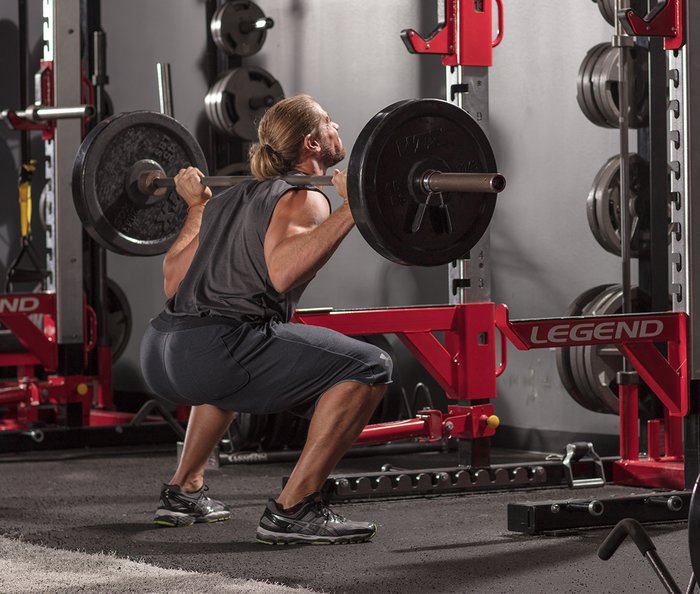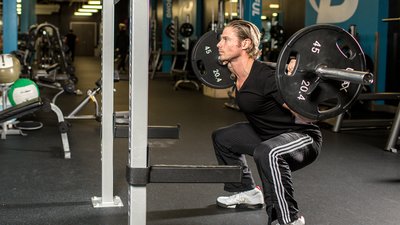How does a win turn into a loss? You fill your cupboard with healthy foods, then make a beeline for your stash of Oreos. You bring your suntan lotion to the beach, but forget to put it on till it's too late. Or, you load up the squat bar with enough plates for a party of four, then only descend an inch or two. In each case, you have the right intention, but your execution needs some work.
I'm all for partial-rep training with squats and bench presses, if that's the intended purpose. But what I describe above are "shallow squats"—where your thighs stop well short of being parallel to the ground. They are no substitute for full-range-of-motion leg training, and, quite frankly, it's a half-assed way to train, not to mention a recipe for injury.

Get Out of the Hole to Get Whole
The biggest drawback to shallow squats is that they shortchange your glutes. "Deeper squats train the glutes through a larger range of motion, and specifically overload the glutes in their stretched position," says Christopher Barakat, MS, ATC, who works at the Human Performance Lab at the University of Tampa. "When you're 'in the hole' and have a greater degree of hip flexion, you put a concentrated workload on your glutes."
Deep squats help other lower-body musculature too, of course.
"By increasing the degree of flexion at the knees, deep squats force your quads to work through a larger ROM," adds Barakat. "Then, as you ascend and extend your hips forward, your hamstrings kick in since supporting hip extension is one of their secondary roles."
Not everyone should do deep squats, or needs to do them. Lack of mobility and flexibility can make this movement difficult or painful. But if your goal is to optimize leg strength, the closer you get to that parallel position, the better.


